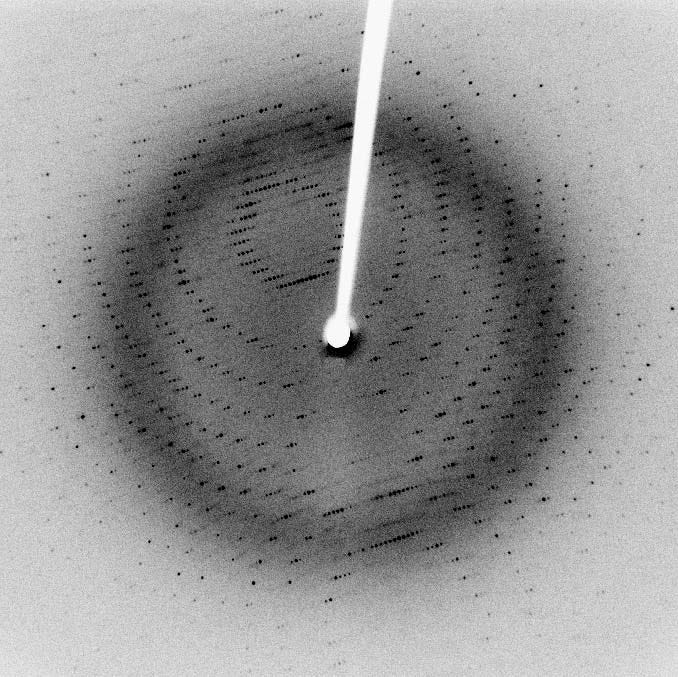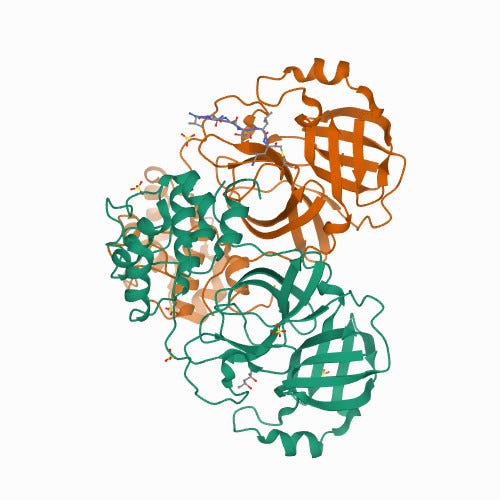Finding Purpose Through Unexpected Patterns in Science
Written on
Chapter 1: Awakening in the Lecture Hall
It’s 9:17 AM, and I’m still groggy. Surrounded by fellow undergraduates, I’m nestled in the surprisingly cozy green seats of the lecture hall, grateful for shelter from the notorious eastern winds. At this latitude, it still feels like nighttime—the northern sky is just beginning to brighten.
While I should be diligently taking notes on amino acid structures, the only thing I’ve managed is a whimsical sketch of a flowery, free-spirited woman. It’s not too shabby. Maybe I could just live in the woods, creating art while fluffy rabbits play around me?
I sigh and adjust my thick sweater, one of the many woolly items I packed for my move to Scotland. It’s ironic, considering I hail from Northern England, which is nearly as cold. Yet, since it doesn’t carry the same reputation, I followed my mother’s advice to prepare for ‘arctic survival’. I foolishly overlooked the fact that Scotland has heated buildings, leaving me hot and uncomfortable.
This extra warmth isn’t helping me focus on those amino acids.
Honestly, I’m questioning my decision to pursue a degree in biochemistry. Just months ago, I aspired to be a doctor—out there diagnosing, prescribing, and fixing. At the last moment, my seventeen-year-old self shifted gears, leaving me in a state of uncertainty.
I was still waiting for inspiration to arrive, and then it hit me—hard and unexpectedly.
Suddenly, a peculiar image appears on the lecture hall screen. A fuzzy, murky visual filled with small black dots, arranged in a curious pattern.
I had never encountered anything like it before.

The lecturer, now noticing her audience's growing engagement, exclaims, “This is an X-ray diffraction pattern.”
She explains, “When X-rays pass through a crystal of a structure we’re interested in, like a protein, the beams diffract, creating a two-dimensional pattern. This fuzzy image serves as a map that reveals the geometry of the protein. By analyzing the arrangement of the black dots, we can pinpoint the exact locations of the atoms within the protein and their orientations.”
I’m captivated.
Why? Because understanding the structures of specific proteins is crucial for developing drugs to combat diseases. For instance, we may need to inhibit a particular receptor or enzyme. Proteins are too small for light microscopy—the visible light wavelength is too long to penetrate between the protein atoms and form an image. Thus, we rely on electromagnetic radiation with shorter wavelengths, like X-rays. Through clever mathematics, we can translate the information in the diffraction pattern into an image of the protein. By firing X-rays at the protein from various angles, we can construct a three-dimensional model of its structure.
This particular X-ray diffraction pattern belongs to a SARS proteinase—an enzyme that degrades protein chains and, importantly, allows the SARS virus to create new virions and infect additional cells. Proteins like this are critical targets for drug development.
Here’s a resolved protein structure of the SARS proteinase:

Can you appreciate the intricate structure of the SARS proteinase? The ribbon-like backbone of the protein forms clefts, protrusions, and valleys. Scientists strive to identify the ‘active site’ of enzymes like this, where key chemical reactions occur. The structure of the active site informs the design of specific chemicals (drugs) that can inhibit the enzyme’s action.
This approach—designing drugs to fit a target protein—has transformed medicine and expedited the drug discovery process.
Suddenly, all that ‘tedious biochemistry stuff’ clicks into place. These are the essential tools for interpreting the maps generated by X-ray crystallography. Finally, it feels like the countless hours of dry lectures on biochemical minutiae make sense: I need to grasp the fundamentals to understand this.
I successfully completed my biochemistry degree and, fueled by my initial fascination with protein diffraction patterns, pursued a PhD focused on analyzing the X-ray structures of enzymes linked to antibiotic resistance.
The journey wasn’t always smooth—though I was a diligent student, I wasn’t the top of my class. Many peers excelled in detail-oriented tasks and complex calculations, but ultimately, it was that initial spark—the sight of those diffraction patterns, the arrangement of black dots—that motivated me to persevere and carve out my niche in science, at least for a time.
Now, as an educator, my deepest wish is for my students to discover their own ‘pattern of black dots’ and from it, find the space where they truly belong.
Chapter 2: Finding Inspiration in Everyday Life
In this video, "Finding Inspiration on Ordinary Days," we explore how everyday moments can ignite creativity and passion in our lives.
Chapter 3: The Evolution of Gaming Modifications
In "MyHouse.WAD - Inside Doom's Most Terrifying Mod," discover the fascinating history behind one of the most influential mods in gaming.